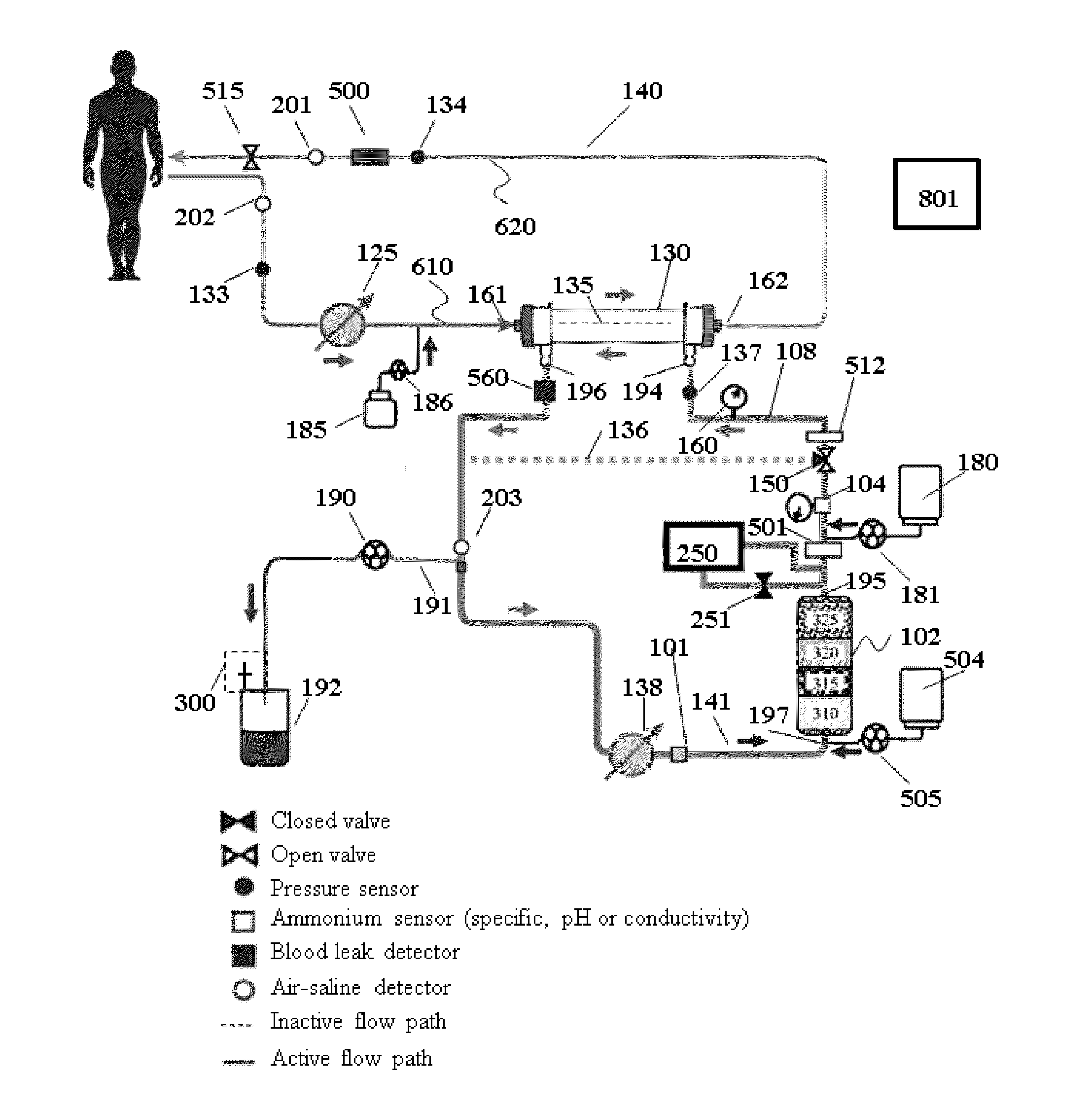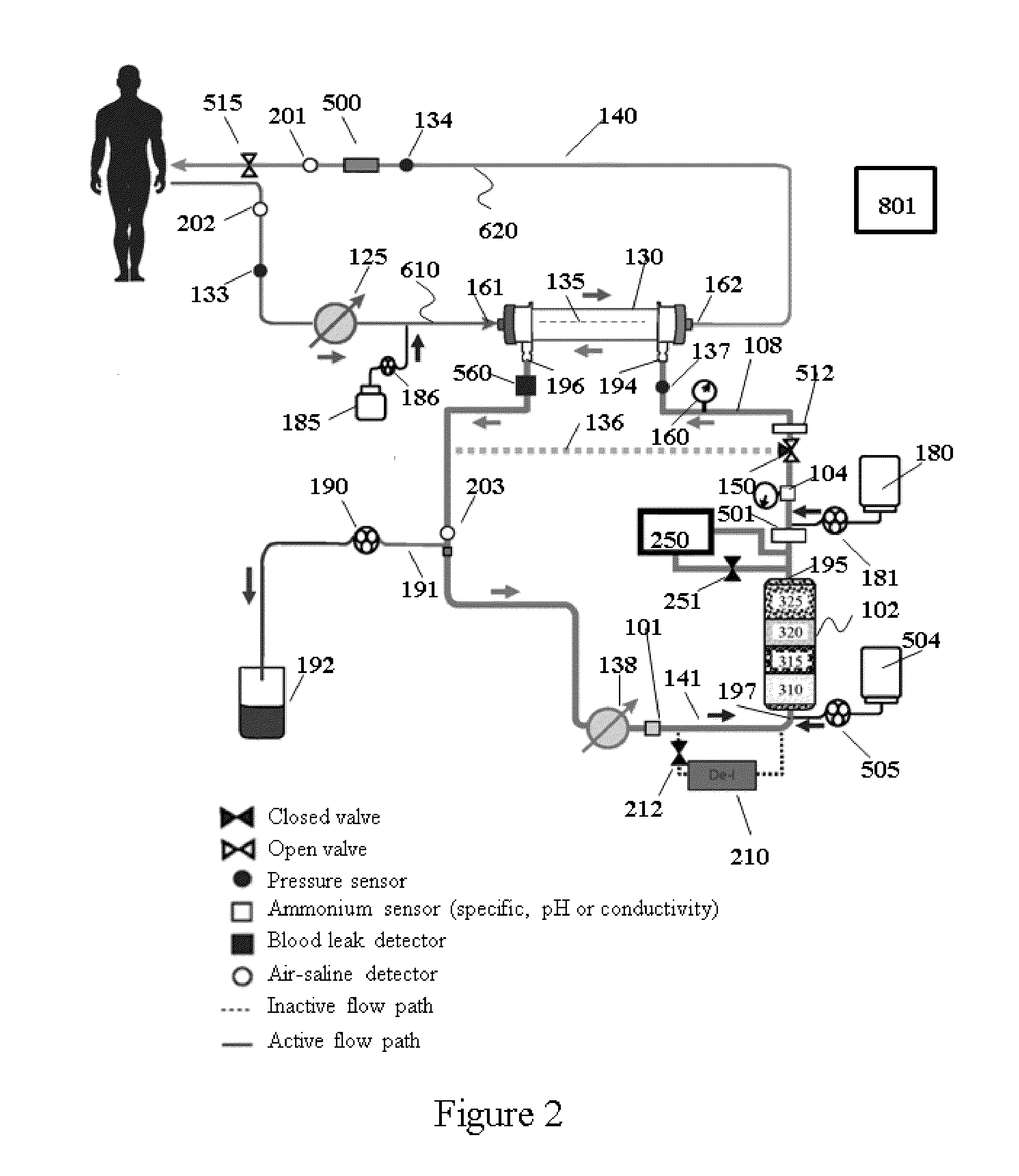Polystyrene sulfonate resin for use with a hemodialysis system having a controlled compliance dialysis circuit
a technology of polystyrene sulfonate resin and hemodialysis system, which is applied in the direction of filtration separation, water/sewage treatment by ion exchange, and separation processes, etc., to achieve the effect of improving the level of parathyroid hormone, reducing the ability to clear phosphates from the blood, and improving the ability to hemodialysis
- Summary
- Abstract
- Description
- Claims
- Application Information
AI Technical Summary
Benefits of technology
Problems solved by technology
Method used
Image
Examples
Embodiment Construction
[0109]A controlled compliance dialysis circuit is provided for conveying and re-circulating a dialysate between a dialyzer, where the dialysate picks up waste products or impurities such as urea, and a sorbent cartridge where waste products or impurities are removed from the dialysate to form refreshed dialysate after the addition of cation electrolytes. The dialysate flow path described herein has any one or combination of active control of fluid flow entering and exiting the flow path in a manner that allows for the accurate performance of ultrafiltration, quantization of urea removal, and the performance of convective clearance of mid-weight uremic impurities or waste products without an excessive risk for blood clotting.
DEFINITIONS
[0110]Unless defined otherwise, all technical and scientific terms used herein generally have the same meaning as commonly understood by one of ordinary skill in the relevant art.
[0111]The articles “a” and “an” are used herein to refer to one or to mor...
PUM
| Property | Measurement | Unit |
|---|---|---|
| pressure | aaaaa | aaaaa |
| pressure | aaaaa | aaaaa |
| pressure | aaaaa | aaaaa |
Abstract
Description
Claims
Application Information
 Login to View More
Login to View More - R&D
- Intellectual Property
- Life Sciences
- Materials
- Tech Scout
- Unparalleled Data Quality
- Higher Quality Content
- 60% Fewer Hallucinations
Browse by: Latest US Patents, China's latest patents, Technical Efficacy Thesaurus, Application Domain, Technology Topic, Popular Technical Reports.
© 2025 PatSnap. All rights reserved.Legal|Privacy policy|Modern Slavery Act Transparency Statement|Sitemap|About US| Contact US: help@patsnap.com



